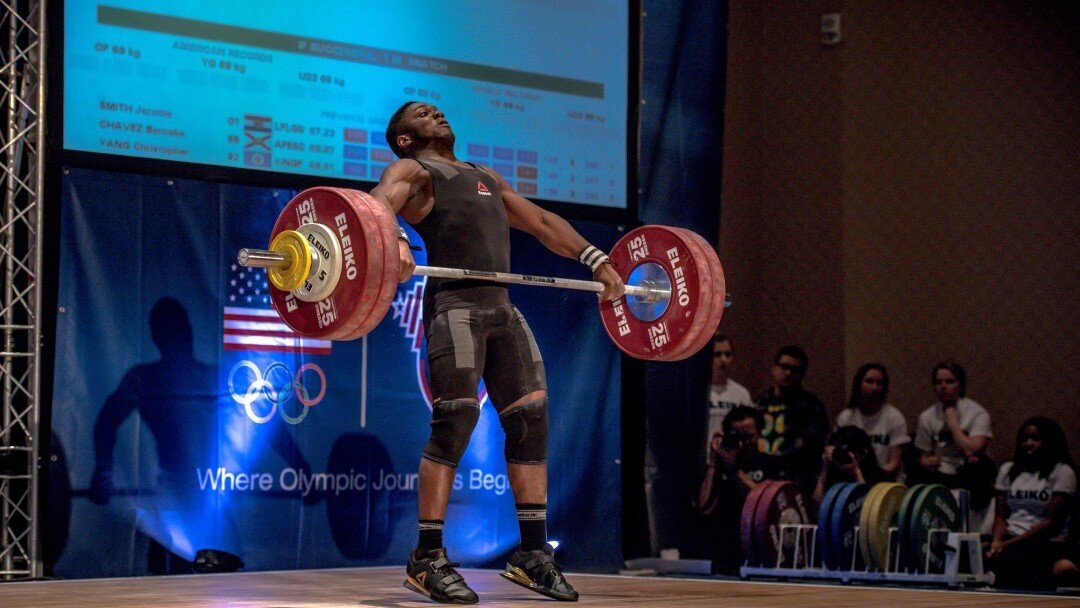Olympic Lifting: It’s Not Going to Catch Itself
In this post, BSP sports performance coach, Sam Uline, discusses the olympic lifts and their importance in athletic development for all athletes. If you enjoy this article and would like more information regarding the use of the olympic lifts for athletic development, check out one of our former articles comparing olympic lifts to plyometrics for linear speed development.
The sport of olympic lifting is recognized all over the world, as a sport within itself, as well as training tools for athletics. Olympic weightlifting consists of two independent movements that require an athlete to lift a load over head. These movements include the clean and jerk, as well as the snatch. The clean & jerk and the snatch tend to be very complex and neurally taxing movements, so it’s crucial that the athlete is focused, properly trained and supervised doing these lifts. Every athlete should incorporate some form of olympic lifting, but why?
Olympic lifting for the purpose of training athletes, has the intent of improving power output, explosiveness and force production. These lifts typically occur under one second, primarily using the phosphagen energy system. The phosphagen system provides ATP mainly for short-term, high-intensity activities (0-6 seconds), such as sprinting, resistance training, jump training and any sport that requires high-load speed strength, but it is also active at the start of all exercise regardless of intensity. This energy system uses creatine to maintain the concentration of ATP (Creatine Kinase Reaction). It takes between 3-5 minutes to replenish the ATP used during a lift or set, and about 8 minutes to re-synthesize creatine phosphate. Knowing this, an athlete will typically only perform 2-4 reps of an olympic lift in order to maximize its effects on the body. Therefore, each repetition will become more taxing because of the lift’s biomechanical characteristics, as the athlete progresses through their workout.
After having a concrete grasp of what olympic lifting is and how it affects the body, we will dive into why every athlete should be incorporating olympic lifting and what improvements they will see. First and foremost, we reemphasize the vital goal of olympic lifting, to train explosive power. As mentioned earlier, these movements are typically performed in under one second. There is no other form of resistance training to match the speed of this loaded exercise. The closest comparison would be sprinting and plyometric training (other great tools for power output). From the time the bar is put in motion during the first pull, whether it’s from the ground or the high-hang position, you are creating a vertical force. In contrast, after the second pull, when the bar reaches its maximum height, its momentum has gone from a vertical force to the ceiling and back down into the catch position because of gravity. By creating a bar path like this one, in either a clean or a snatch, you are producing an enormous amount of power. We are not training our athletes to be professional olympic lifters, we are using these tools to improve their athletic performance. The relationship between the power output from an olympic lift will directly transfer into an athlete’s vertical jump, sprinting dynamic and other explosive movements. The quicker an athlete can properly move the bar and progress a load, the higher their power output will be. These tools are great options for any athlete looking to improve the power output, including sports such as volleyball, basketball, football, track and field and baseball. If a coach can train an athlete to properly olympic lift, within reason, there is no limit to what they can accomplish in their athletic performance.
Fig. 1 First Pull
Fig. 2 Second Pull
This now leads us to the use of olympic lifting variations. Not all athletes will be able to perform a full olympic lift that be beneficial to power output, due to structural differences, past injuries, mobility issues or another factor. This is a great opportunity to take advantage of the variations to get the same effect of the whole lift. Exercises like the kettle bell swing, power shrug or high pull are commonly used as a variation to the clean or the snatch by simply changing your grip. All these movements incorporate some kind of triple extension, load and speed. More common than not, coaches will regress specific athletes to a variation in-season based on the risk-vs-reward concept. There can be many different thought processes behind choosing a variation over a full lift. As long as your athlete is able to complete the movement efficiently and explosively, then there is no fault in using a variation.
Since olympic lifting is more complex than most lifts, it has a tendency to require more attention and supervision. But, regarding increasing your power output, it is the biggest bang for your buck, if you are able to properly load and execute the movement. If you are looking to improve your power output and explosiveness, olympic lifting would be a great addition to any program.
Sources: NSCA-Essentials of Strength Training and Conditioning


